Table of Contents
Blood relation questions for bank exams are extremely important because these are easy questions and help boost the marks that are scored by the candidate in the examination. Due to their simplicity, blood relation questions often have a high accuracy rate, meaning you can be confident in your answers and avoid unnecessary mistakes.
Blood Relation Questions for Bank Exams
Blood relation questions are a popular type of logical reasoning problem that often appears in bank exams. These questions test your ability to understand and analyze family relationships and to deduce connections between individuals based on given information. Solving these problems requires a combination of critical thinking, problem-solving skills, and a strong understanding of family structures.
Blood Relation Questions
Directions (1-3): Study the following information carefully to answer the given questions.
Eight Persons P, Q, R, S, T, U, W and X in a family. There are three married couple. T is sister P. R is grandfather of X. W is father of U. Q is daughter in law of S who is not married to W. X is unmarried male and T is married to U who has no child.
Q1. Who among the following is nephew of T?
(a) R
(b) X
(c) S
(d) Q
(e) None of these
Q2. Who among the following is son in law of S?
(a) P
(b) X
(c) R
(d) U
(e) None of these
Q3. What is the relation of Q with X?
(a) Mother
(b) Aunt
(c) Grand-Mother
(d) Sister
(e) Wife
Directions (4-6): Read the following information carefully and answer the questions given below.
In a family of three-generation, there are ten members i.e. A, B, C, E, J, K, N, P, R, and Z, and three married couples. N is the wife of C. Z is the niece of P but not a child of K. A is the only daughter-in-law of E’s father’s sister. B is the daughter of C who is the father of K. N is the mother of P. Grandfather of E has only two daughters. K has no child. J is the wife of P who has only one child. E is the female member of the family but she is not the niece of P. No parent has more than three children.
Q4. What is the relation of P with respect to R?
(a) Either Uncle or Aunt
(b) Paternal Uncle
(c) Maternal Uncle
(d) Maternal Aunt
(e) None of these
Q5. How many female members are there in the family?
(a) Six
(b) Seven
(c) Either seven or eight
(d) Either six or seven
(e) None of these
Q6. Who among the following does not belong to the second generation of the family?
(a) Both K and P
(b) Both N and P
(c) Both E and R
(d) Both A and B
(e) None of these
Directions (7-9): Read the following information carefully and answer the questions given below.
Seven persons are there in a family with two generations. S is the sister-in-law of Z, who is unmarried female. T is the father of O and Z only. N is the sister of V and mother-in-law of S. W is the brother-in-law of O. The number of males is more than that of females.
Q7. How V is related to Z?
(a) Uncle
(b) Father
(c) Aunt
(d) Mother
(e) Can’t be determined
Q8. Four of the following five are alike in a certain way based on the given arrangement and so form a group. Who among the following does not belong to that group?
(a) T
(b) V
(c) O
(d) W
(e) S
Q9. How T is related to S?
(a) Uncle
(b) Father-in-law
(c) Father
(d) Mother-in-law
(e) Can’t be determined
Directions (10-11): Study the information carefully and answer the questions accordingly.
There are seven members in a family. The number of males is more than the number of females. T is married to F, who is the mother of two children. T has a sister-in-law. U is the grandfather of B and not the father of T. Q is the mother of S. J is the son of T who is the brother-in-law of S.
Q10. How T is related to B?
(a) Nephew
(b) Brother
(c) Uncle
(d) Father
(e) None of these
Q11. Four of the following five are alike in a certain way based on the given arrangement and so form a group. Which of the following does not belong to that group?
(a) F, U
(b) Q, B
(c) T, S
(d) J, U
(e) T, B
Directions (12-14): Read the following information carefully and answer the questions given below.
In a family of three-generation, there are eleven members i.e. A, N, C, B, M, K, R, Y, E, O and D in which four married couples are there. A is the brother-in-law of C. Only one child of M is married. K is the paternal grandfather of R. N is the daughter-in-law of B. E is the married female member of the family. C has no siblings. M has only one son. Y is the nephew of D. Y is not child of A. D is the sibling of N. R is the granddaughter of M. O is the married member of the family and belongs to the first generation of the family. M is the mother in-law of C.
Q12. What is the relation of Y with respect to O?
(a) Grandson
(b) Son
(c) Uncle
(d) Father
(e) None of these
Q13. How many female members are there in the family?
(a) More than six
(b) Five
(c) Cannot be determined
(d) Six
(e) None of these
Q14. Who among the following is the paternal grandmother of R?
(a) O
(b) K
(c) B
(d) Cannot be determined
(e) None of these
Directions (15-17): Study the information carefully and answer the questions accordingly.
There are nine members in a family with four females and two married couples. B is the son-in-law of D. C is the daughter-in-law of H who is the father of I. N is the granddaughter of D. I is unmarried. E is the son of D. D is married to G who is the grandfather of F. F is the niece of I who is the brother of B. There could be single parent in the family.
Q15. Who is the mother of N?
(a) The daughter of H
(b) The wife of E
(c) F
(d) C
(e) None of these
Q16. How E is related to F?
(a) Grandfather
(b) Father
(c) Paternal uncle
(d) Maternal uncle
(e) None of these
Q17. Four from the following five are similar in a certain way and forms a group. Find out the one who does not belong to that group?
(a) I
(b) E
(c) B
(d) C
(e) F
Directions (18-20): Study the information carefully and answer the questions accordingly.
A three-generation family consists of seven members. B is daughter-in-law of D. G is spouse of D and mother of three children in which only one is male. T’s nephew is the child of E. E is brother of A and T. Q is one of the members in the family.
Q18. How many male members are there in the family?
(a) Four
(b) Two
(c) Three
(d) Either four or three
(e) Can’t be determined
Q19. What is the relation of Q with respect to D?
(a) Sister
(b) Brother
(c) Son-in-law
(d) Grandson
(e) None of these
Q20. Who is the nephew of A?
(a) Q
(b) D
(c) Can’t be determined
(d) B
(e) Either Q or B
Directions (21-22): Study the following information carefully and answer the questions accordingly.
K is the mother of P who is the sister of G. P is married to Z. H is the parent of G. I is the mother of Z and Q is the only daughter of I. N and G are siblings. K has only one daughter. I is the wife of R.
Q21. How is Z related to N?
(a) Son
(b) Sister-in-law
(c) Brother-in-law
(d) Brother
(e) None of these
Q22. How is P related to I?
(a) Sister
(b) Daughter
(c) Daughter-in-law
(d) Mother
(e) Either Sister or Daughter
Directions (23-25): Read the following information carefully and answer the questions given below.
A three-generation family consists of eight members i.e., U, V, W, X, D, E, F and G in which three are married couples. V is the father of F. E is the mother of V. W is the sister-in-law of G. G is the mother-in-law of D. F is the grandson of U who is the father-in-law of G. X is the brother-in-law of F.
Q23. What is the relation of W with respect to U?
(a) Daughter-in-law
(b) Niece
(c) Daughter
(d) Granddaughter
(e) None of these
Q24. Who amongst the following is the grandmother of F?
(a) W
(b) G
(c) E
(d) D
(e) None of these
Q25. How many female members in the family?
(a) Five
(b) Three
(c) Four
(d) Can’t be determined
(e) None of the above
Solutions:
Solutions (1-3):
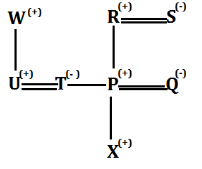
S1. Ans.(b)
S2. Ans.(d)
S3. Ans.(a)
Solution (4-6):
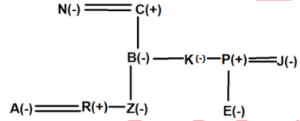
S4. Ans.(c)
S5. Ans.(a)
S6. Ans.(c)
Solution (7-9):

S7. Ans.(a)
S8. Ans.(e)
S9. Ans.(b)
Solution (10-11):
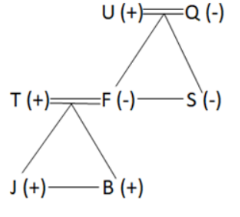
S10. Ans.(d)
S11. Ans.(c)
Solution (12-14):
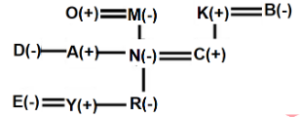
S12. Ans.(a)
S13. Ans.(d)
S14. Ans.(c)
Solution (15-17):
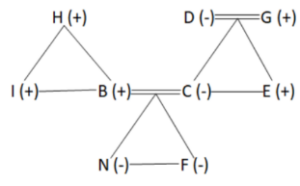
S15. Ans.(d)
S16. Ans.(d)
S17. Ans.(e)
Solution (18-20):
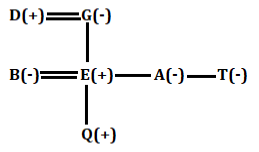
S18. Ans.(c)
S19. Ans.(d)
S20. Ans.(a)
Solution (21-22):

S21. Ans.(c)
S22. Ans.(c)
Solution (23-25):
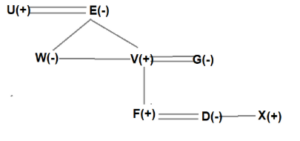
S23. Ans.(c)
S24. Ans.(c)
S25. Ans.(c)

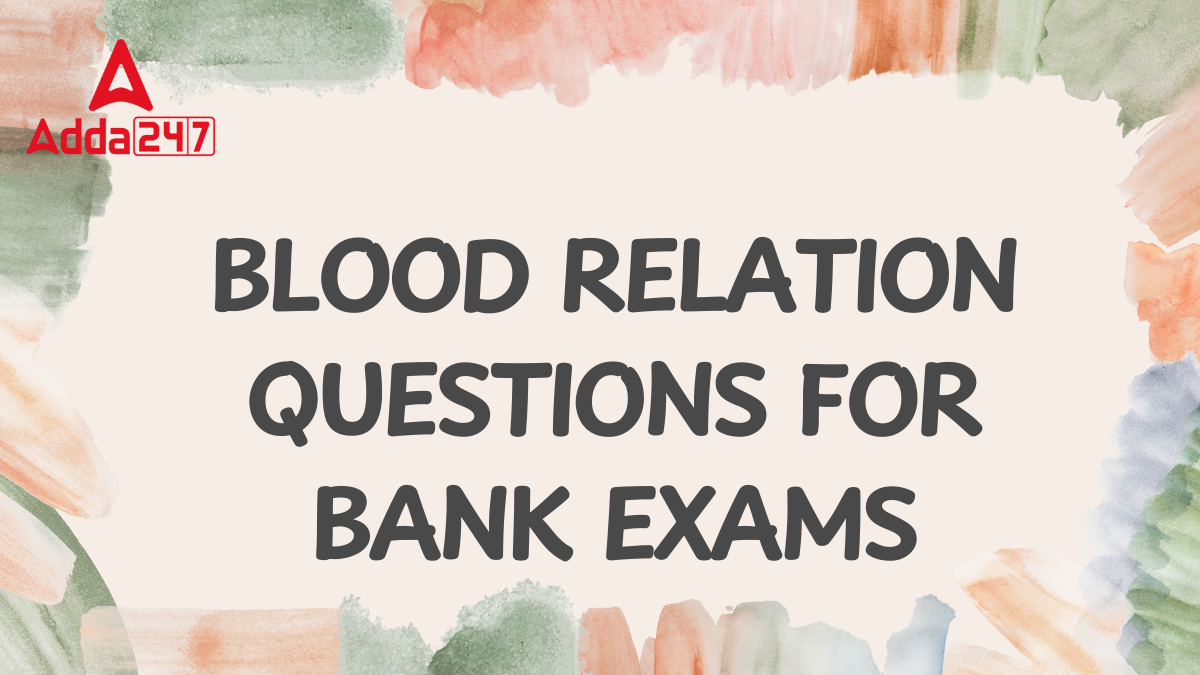


 GA Capsule for SBI Clerk Mains 2025, Dow...
GA Capsule for SBI Clerk Mains 2025, Dow...
 The Hindu Review October 2022: Download ...
The Hindu Review October 2022: Download ...
 Daily Current Affairs 15th April 2025, I...
Daily Current Affairs 15th April 2025, I...


